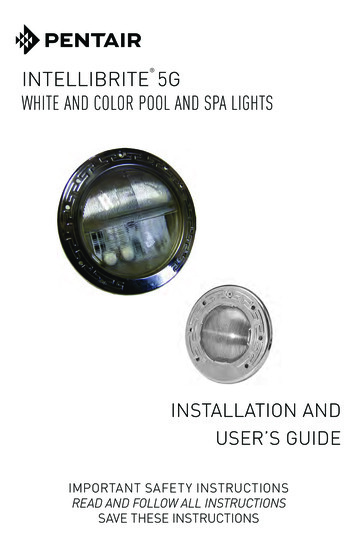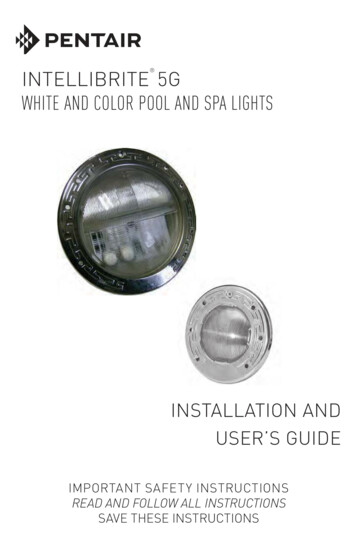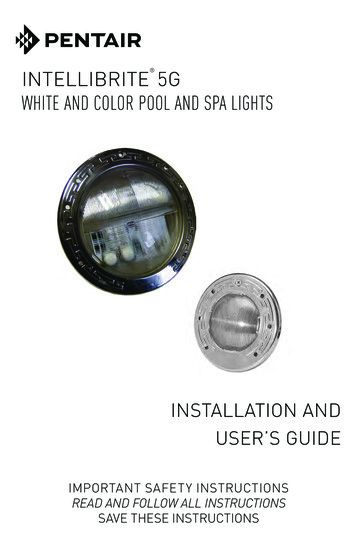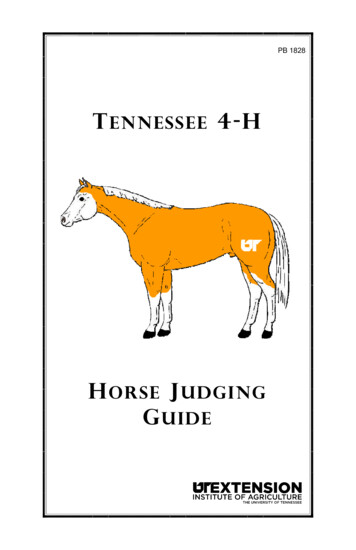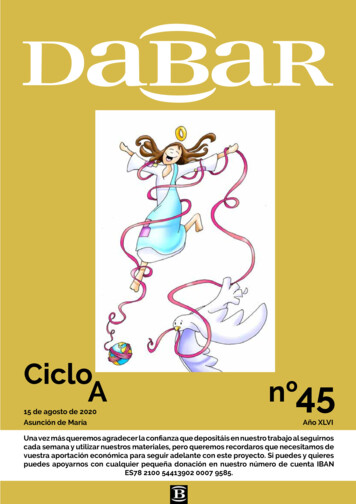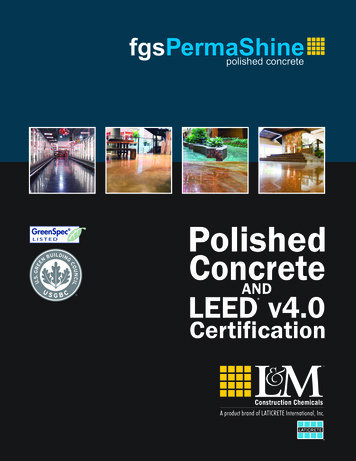
Transcription
fgsPermaShinepolished concrete PolishedConcreteANDLEED v4.0 CertificationTMConstruction ChemicalsA product brand of LATICRETE International, Inc.
Polished Concrete & LEED v4 CertificationL&M Construction Chemicals, Inc.On the cover:Credits:Cover photos, left to right: Value Center Market, Sterling Heights, MI Equinox Fitness Center, New York, NY Gentex Corporation, Zeeland, MI University of Arkansas Law School, Fayetteville, ARFGS/PermaShine Polished Concrete Floor ProcessPrepared for L&M Construction Chemicals LATICRETEInternationalSubmitted by Paul NutcherPresidentGreen Apple Group, LLC407 Lake Howell Rd, Suite 102Maitland, FL 3275102: Polished Concrete & LEED Certification
Table of Contents:SectionPageForward. 4Background . 5Purpose. 6USGBC, LEED, and other Green Building Rating System. 7LEED Version 4 (LEED v4). 8Polished Concrete Flooring in LEED v4 Certified Projects . 10Polished Concrete Flooring Systems Contribution toLEED-NC v.4 Certification. 11Integrated Process (IP):IP Credit 1: Integrative Process . 11Energy and Atmosphere (EA):EA Credit 1: Optimize Energy Performance . 12Materials & Resources (MR):Introduction. 14MR Credit 1: Building Life-Cycle Impact Reduction . 15MR Credit 2: Building Product Disclosure and Optimization –Environment Product Declarations. 17MR Credit 3: Building Product Disclosure and Optimization –Sourcing of Raw Materials . 19MR Credit 4: Building Product Disclosure and Optimization –Material Ingredients .21Indoor Environmental Quality (EQ)EQ Credit 2: Low-Emitting Materials.23EQ Credit 5: Thermal Comfort. 24Innovation in Design (ID):ID/EA Credit 1: Optimize Energy Performance . 26ID/MR Credit 3: Material Reuse: 15% (NC & Schools 1 point),10% (CS 1 point). 26ID/MR Credit 4: Recycled Content: 30%(post-consumer 1/2 pre-consumer) . 26ID/MR Credit 5: Regional Materials: 30% (NC, Schools,CS: 1 point). 27ID Credit 4: LEED Accredited Professional RegionalEnvironmental Priority (RP): . 27RP Credit 1-4: Regional Environmental Priorities . 27More on Innovation in Design Credits . 27The Future of Green Building Rating Systems . 28Disclaimer . 29LEED-NC Point Allocation Guide . 32Polished Concrete & LEED Certification:03
ForwardThis edition of the LEED v4 and Polished Concrete Floors white paperwill cover the most significant changes in the LEED Green BuildingRating System since the rating system was first released in 1999. Thelatest LEED v4 was released in November 2013 with new categories,prerequisites and credits. It requires unprecedented product ingredientscrutiny and transparency requirements, and a previously unrequiredlife-cycle perspective, especially, in regards to building products andtheir energy and environmental impacts. The new rating system offersproject teams standards, acceptable third-party certifiers and identifiesscience-based measurement tools for assessing and verifying thesustainable attributes of building products.The new emphasis on documenting material transparency and productlife-cycle environmental impacts will be achieved through a “gut rehab”of the Materials and Resources category (which has always been themost product-oriented category in LEED). The MR Credits in LEED v4have been renamed and the language within them contains newrequirements. Generally, single product attributes such as recycledcontent and regional materials will remain important to LEED v4project teams vs. teams seeking project certification under past versionsof LEED. For this new version, however, they also will be tasked withselecting products from a life-cycle perspective, not just products withsingle sustainable attributes. The new MR Credits go beyond theproduct level and task project teams to source sustainable buildingassemblies and if possible the entire structure and its surroundings froma life-cycle perspective.This significant shift in the assessment of green products may changehow installations of Polished Concrete Floor Systems are measured fortheir energy and environmental impacts in LEED v4, but the overallpositive impact of this type of floor system will carry over into the newversion of the rating system. Indoor environmental quality, buildingreuse potential and the single product attributes are all among the singleproduct attributes in which Polished Concrete Floors have a directimpact.A Polished Concrete Floor System can assist project teams seekingcertification of a green building project and how this flooring systemdoes that will be covered in-depth within this white paper. An update onthe relevant, new energy standard required by LEED in the energyperformance prerequisites and credits will be discussed. A moresignificant change to LEED v4 in the Energy and Atmosphere categoryincludes new LEED Credits designed to capture actual energyperformance data, a task not previously required in earlier LEEDcertified projects.The thermal mass of concrete foundational slabs and the resultingenergy efficiency benefits of exposed interior concrete surfaces will be04:Polished Concrete & LEED Certification
important for compliance with the energy credits in LEED v4. Thechanges to the Thermal Comfort survey will be addressed as well. TheIndoor Environmental Quality areas have been revised. Any LEEDpoint crossover potential will be explored and regional environmentalpriority benefits to polished concrete will be explained. Many of thechanges in LEED v4 have already been or will be captured in newversions of the Collaborative for High Performance Schools (CHPS)rating system, Green Globes, The Living Building Challenge, theEnergyStar program, and some building codes including the CaliforniaGreen Building Standards Code (CALGreen). Since the LEED ratingsystem is very similar to these other programs, which are both voluntaryand mandated, the focus of this white paper will remain on LEED v4.BackgroundConcrete construction makes environmental, social, and economicsense. Because polished concrete floors can have a beneficial impact onall three areas, polished concrete floors can literally and figuratively bethe foundation for greener building.According to the Department of Energy, commercial buildings in theUnited States consume 18% of our nation's energy and are responsiblefor 18% of the nation's carbon dioxide emissions. Furthermore, asreported during the Energy Programs Consortium presented inFebruary 2008 in “Income, Energy Efficiency and Emissions: TheCritical Relationship,” the residential building sector consumes 22% ofour electricity and contributes 20% of our carbon emissions.Building green is a good idea for more than environmental reasons.From an economic standpoint, the U.S. Environmental ProtectionAgency (EPA) estimates that tenants or building owners can save about50 cents per square foot annually through strategies that cut energy useby 30%. On 20,000 square feet, this can represent a savings of 50,000or more in a five-year lease.Exposed concrete in the interior of buildings enhances energyperformance. Conservation of energy is the first and least expensivestep toward an overall increase in a building's energy efficiency. As thebuilding envelope is made more airtight through caulking and addingthermal and reflective insulation, the off-gassing of VOCs from afinished interior is more critical to monitor and mitigate because lessfresh air from outside enters the building. Polished concrete helpsmitigate the ways in which environmental quality can be negativelyimpacted in buildings that are lacking adequate fresh air ventilation.Concrete is inert. Polished concrete is a zero-VOC floor system.Polished Concrete & LEED Certification:05
PurposeL&M Construction Chemicals commissioned Paul Nutcher, CSI CDTof Green Apple Group, LLC, to consider the potential LEED creditsavailable to building teams when a polished concrete floor is included inthe design and construction of new commercial buildings, includingschools and core and shell projects.There have been many new proposed versions of LEED v4. This whitepaper is based on the balloted version approved by a consensus of theUSGBC membership in the summer of 2013. The new version ofLEED v4 will also cover healthcare, retail, data centers, warehouses &distribution centers, hospitality and healthcare building types, whichwere not included in LEED v.3 (2009) rating system. Not all credits inboth LEED versions are applicable to every building type. For example,LEED for Schools places more of an emphasis on acoustics, whichmight not be applicable in a LEED Core & Shell project.Of the many green design strategies, this paper specifically addressesthe role of a polished concrete flooring system in a high performancebuilding. Polished concrete flooring, such as the FGS/PermaShinesystem, is an economical and aesthetically pleasing element within abuilding team's overall design strategy. Concrete surface treatments forfloors are growing in popularity because these floor systems have manysustainable attributes.An additional purpose of this white paper is to assist architects,specifiers, contractors and building owners seeking LEED GreenBuilding Rating System points to certify their project while, at the sametime, enhancing aesthetics and safety within a commercial interior witha polished concrete floor system.The following documentation provides detailed information forbuilding teams pursuing LEED certification of a building projectthrough LEED-NC v.4. The benefits of pursuing LEED with polishedconcrete floor systems include improved thermal energy mass, thepossibility of reusing existing building materials, and/or the inclusion ofpost-consumer recycled content and regional materials, among others.06:Polished Concrete & LEED Certification
USGBC, LEED andother GreenBuilding RatingSystemsThe realization that buildings needed to become more energy efficientand healthier for their occupants, coupled with a desire to reduce theirimpact on their surroundings, sparked the earliest stakeholders at theU.S. Green Building Council (USGBC) to take steps toward achievingmore sustainable buildings. The USGBC is a non-profit coalition ofbuilding industry professionals who seek to improve the environmentalimpacts of buildings, campuses, and communities. The Council's firststeps resulted in the Leadership in Energy and Environmental Design(LEED ) Green Building Rating System . LEED measures abuilding's energy and environmental performance and has become themost widely recognized national rating tool for third-party verificationof a sustainably designed, built, operated, and maintained building.LEED is a voluntary, consensus-based, national program that serves asan overlay to the building code for project teams seeking to exceed justto-code design and construction practices.It is important to note that there are other programs for measuringsustainability and building performance and polished concrete floorsystems, including points toward compliance with LEED in buildingswith polished concrete floors will also contribute points towardcertification through most other rating systems, including theCollaborative for High Performance Schools (CHPS), Green Globes,Living Building Challenge, and Energy Star. In general, if points areapplicable for LEED certification, they are usually available in otherrating systems. The Green Globes National Green Building RankingSystem is directly comparable to LEED-NC, and was developed by theGreen Building Initiative (GBI), which awards Green Globes tobuildings that have met its requirements for certification.“Newly patented advances indry polished concreteeliminate primitive wetgrinding slurry byproductsthat typically required landfilldisposal.”It is important to note that all of these systems rate green buildings only,and not products. The Energy Star and CHPS programs do maintaingreen product databases, unlike the USGBC. However, some of thenew Materials and Resources categories in LEED list green productlabeling schemes that can help project teams quickly identify singleproduct attribute-tested products. Some product labeling programs,such as Cradle to Cradle certified products, can provide project teamswith assistance in determining products that have undergone life cycleanalysis for their energy and environmental impacts. Regardless ofproduct labeling, building teams seeking LEED certification for theirdesign strategies should consider the manufacturing process, materials,and the installation process of the specified building materials in orderto obtain points toward certification.Polished Concrete & LEED Certification:07
LEED Version 4(LEED v4)In order to certify a green building, it takes an integrated project teamgaining input from various disciplines related to the design,construction and operation of the proposed building. Therefore,meetings about the owner's requirements and the project's potential forLEED certification should all be determined during preliminary designphases and if possible prior to schematic design.As the LEED certification process relates to polished concrete, the roleof a polished concrete floor system needs to be part of the integrateddesign meetings because of its energy efficiency and its sustainablematerial properties and the overall reduced environmental impact of theflooring system during the life cycle of the building. Most polishedconcrete floors use the foundational slab and thus the system is part ofthe building envelope. There is also thermal mass to consider andconcrete coloring for a reflective interior surface to take full advantageof natural light as a source of ambient lighting for the building interior.This white paper covers LEED v4 for New Construction (NC) andMajor Renovations, which has new categories, including some that apolished concrete floor can have an impact on but not all. The followingis a list of all the categories:1. Integrative Process (NEW)2. Location and Transportation (NEW)3. Sustainable Sites4. Water Efficiency5. Energy and Atmosphere6. Materials and Resources7. Indoor Environmental Quality8. Performance (NEW)9. Innovation In Design10. Regional Priorities“VOC-Free FGS Hardener Pluschemically hardens anddensifies concrete surfaces,extending the life of thesurface while reducing cost,delivering superior shine,safety, and NFSI CertifiedNon-Slip performance.”08:Polished Concrete & LEED CertificationGenerally, LEED measures the environmental impact, waterconservation and energy performance of buildings both locally andglobally. The LEED family of green building rating systems containsrequirements that list performance standards, many of which havebecome mandated by city and state governments and most federalagencies in building codes. The Government Services Administration(GSA), possibly the world's largest landlord overseeing courthouses,offices, federal agencies, and other U.S. government buildings, requiresa LEED Silver certification level. In 2012, the GSA announced it wouldalso permit its buildings to be certified under the Green Globes andLiving Building Challenge programs. Furthermore, private sectorlandlords that want to rent space to the GSA must have certified theirbuildings to the LEED Silver level for both new construction andrenovations to leased space, which would fall under LEED for ExistingBuildings, Operations & Maintenance (LEED-EBOM) depending onthe scope of the project.
A highest possible LEED score is 104 points in both the current and thenew LEED rating systems. However, because of the unique elements ofevery building, it is highly unlikely a project could gain every potentialpoint. Projects must achieve a minimum of 40 points in order to qualifyfor LEED certified status, 50 points to attain a silver certification, 60points for gold, and 80 points for platinum. The LEED-EBOM ratingsystem has many similar categories to the LEED-NC rating systemalthough prerequisites, requirements and points required forcertification differ.The balloted and USGBC-member approved version of the LEED v4was intended to be a Green Building Rating System for: NewConstruction and Major Renovations, Schools, Retail, NewConstruction, Data Centers, Warehouses & Distribution Centers,Hospitality, and Healthcare.Before going for LEED v4, there are prerequisites in most categoriesexcept Location and Transportation (LT), Innovation in Design Process(IN), and Regional Environmental Priority (RP). The following LEEDPrerequisites must be attainable or the project team cannot qualify forLEED certification of the building:“L&M Construction Chemicalsoffers Vivid Dye colorationpigments and Quartzplatelight-reflective pigmentedfloor hardeners which, inaddition to beingaesthetically pleasing, cancontribute additional lightreflectance properties andprovide other possibilities toreduce electric lightingrequirements.”Integrative Design (ID): Prerequisite: Integrative Project Planning and DesignSustainable Site (SS): Prerequisites: Construction Activity Pollution Prevention Environmental Site AssessmentWater Efficiency (WE): Prerequisites: Outdoor Water Use Reduction Indoor Water Use Reduction Building-Level Water MeteringEnergy and Atmosphere (EA): Prerequisites: Fundamental Commissioning and Verification Minimum Energy Performance Building Level Energy Metering Fundamental Refrigerant ManagementMaterials and Resources (MR): Prerequisites: Storage and Collection of Recyclables Construction and Demolition Waste Management Planning PBT Source Reduction-MercuryIndoor Environmental Quality (EQ): Prerequisites: Minimum Indoor Air Quality Performance Environmental Tobacco Smoke Control Minimum Acoustic Performance/SchoolsA LEED-NC v4 registered project must meet and exceed ASHRAE90.1-2010 to meet the Energy and Atmosphere (EA) Prerequisite. Oncethe base level prerequisites for the energy systems are met, the higherPolished Concrete & LEED Certification:09
LEED Version 4(LEED v4).continuedthe percentage of energy optimization the building is designed toachieve, the more points it will earn in AE Credit 1: Optimized EnergyPerformance. This white paper will dig deeper into the AE Credit 1 laterin the document.Other AE Prerequisites require the energy system to be commissionedby a third-party to verify the performance of the HVAC system and therecannot be any CFCs in the cooling system. There must also be BuildingLevel Energy Metering. The requirements of the LEED prerequisiteswill be fully detailed in the LEED Reference Guide.The LEED Energy and Atmosphere category represents the singlelargest point gathering category, due to the importance of energyefficiency. Here polished concrete can contribute numerous advantagesdue to its thermal storage potential and potential for leveling heating andcooling loads. It is important, therefore, to advise the project team toinclude the thermal mass properties of interior exposed concrete in theoverall energy modeling calculations to gain the most accurateprojected energy performance of the building.With a polished concrete floor system, there is also the potential forbuilding occupants to enjoy greater thermal comfort as a result of thepolished concrete floor leveling ambient air temperatures. Themeasuring of Thermal Comfort is categorized under IndoorEnvironmental Quality (EQ) in LEED.Polished ConcreteFlooring inLEED v4Certified ProjectsThe first step to understanding how polished concrete floors can enhancea high-performance building project is to examine the USGBC programand note how a polished concrete flooring system, such as theFGS/PermaShine system, can help the project team achieve its goal ofobtaining LEED certification.Polished concrete floor systems can potentially contribute points withinseveral of the LEED-NC rating system categories. The dry-appliedpolished concrete process and concrete floors in general can theoreticallycontribute at least five points toward LEED-NC certification. However,because the process of pursuing LEED certification results in synergiesand trade-offs that can interconnect several LEED Credits across two ormore LEED Categories, the FGS/PermaShine system could indirectlycontribute toward more LEED points.As stated above, before the building team can earn LEED certification, itmust meet the Prerequisites and enough points within the LEED Creditsto gain certification. This white paper will describe how theFGS/PermaShine family of products assists project teams with therequirements for attaining the following Credits in LEED-NC v.4registered projects while noting potential assistance in meeting theprerequisites.10:Polished Concrete & LEED Certification
Polished ConcreteFlooring SystemsContribution toLEED-NC v.4CertificationIP Credit 1: Integrative Process (1 point)There is a new credit category for rewarding project teams for utilizingan Integrative Process for the design and construction and maintenanceof a building. The IP category contains a new Prerequisite, which ismandatory for all healthcare projects, and a new credit entitledIntegrative Process, which rewards project teams with a point towardLEED certification if they can meet the credit's requirements.The Integrated Process credit is started by the project team at thedevelopment of schematic design, which must include documentationof at least two building system synergies as a requirement for gainingpoints in this category. Another requirement is a discovery integrateddesign workshop with the goal of developing synergies through thefollowing best practices: energy modeling; habitat well-being assessment; site assessment for environmental, agricultural, storm water,and human impacts; water conservation; and daylighting.At the initial design charette, the Owners Product Requirements (OPR)document must be developed with a human health mission statementaddress in the social, economic and environmental goals of the project;the OPR document must include benchmarks and a project timeline.The level of LEED certification (Silver, Gold, Platinum) goal is set.And, the session must include at least four members of the project team,plus an owner or owner representative.The idea behind this credit is to bring all the project's disciplines andtrades to the table early in the design phase and look for ways tointegrate efforts and cost effective strategies and techniques forachieving goals that nurture human health, conserve energy andresources, and reduce environmental impacts. The charette also mustdetermine the members of the trades responsible for helping to achieveeach LEED credit needed to gain the level of certification set as the goalin the OPR.A project team can enhance its synergies with interior concrete surfacetreatments due to the high reflectance available with a polished concretefloor and the resulting lower initial outlay for overhead lighting systemsas well as the long-term energy savings due to less ambient lightingneeds. Further, in structures with appropriate glazing systems toenhance the flow of sunlight throughout the interior, polished concretecan enhance a design for daylighting.The LCA requirement of buildings for a reduced energy andPolished Concrete & LEED Certification:11
Polished ConcreteFlooring SystemsContribution to LEED-NCv.4 Certification.continuedEnergy andAtmosphere (AE)environmental impact is also first mentioned in the IP category and fullyexplored later in the rating system's Materials and Resources category.Because polished concrete lasts for the lifespan of the building'sfoundation (with the potential for periodic regrinding to restore the slabto its original level and condition), a building envelope comprisingconcrete construction assemblies could score better in the LEED ratingsystem than other flooring options.Energy and Atmosphere (EA)The Energy and Atmosphere category has new available creditsdeveloped to ensure the planned energy performance of the building atLEED certification is the same performance encountered by theoccupants and the building owner over time. This is a change thatreflects an emphasis by the USGBC to make sure a building's improvedenergy performance actually happens beyond the planning stages of theproject.Demand Response (also called Energy Curtailment) is one of the newcredits within this category and is designed to foster a reduction inenergy demand during peak hours. Contained in the changes to Energyand Atmosphere, as well as the new Performance category, areopportunities for projects using polished concrete to retain and evenexpand possible credits toward LEED certification.There is also a new requirement in the commissioning prerequisite thatthe building envelope be commissioned. Again, the thermal mass of apolished concrete floor would fare better during commissioning for aneasier time passing testing and verification benchmarks, especiallycompared to a wood or metal frame construction. It would also assist inthe new Demand Response credit because a polished concrete floorsystem can level peak demand for energy by a building's heating andcooling system due to its thermal mass.EA Credit 1: Optimize Energy Performance, 1-20 pointsThe intent of this LEED credit is to design a heating and cooling system,building envelope, and lighting system that will outperform the baselineenergy performance for the building, as it was calculated during theprocess of complying with LEED EA Prerequisite 2, Minimum EnergyPerformance.In order to meet the prerequisite, the building team must have designedthe building to comply with both the mandatory provisions ofASHRAE/IESNA Standard 90.1-2010 and the PrescriptiveRequirements of 90.1 or the Section 11 Performance Requirements of12:Polished Concrete & LEED Certification
Energy and Atmosphere(AE).continued90.1 (without amendments) or the requirements of the local energy code- whichever criteria is more rigorous. LEED points for EA Credit 1:Optimize Energy Performance are gained for every 2 percentage pointshigher the building's energy system performs above the building'senergy performance baseline calculated in compliance with theprerequisite.Utilizing the thermal properties of a concrete floor system with theFGS/PermaShine system can be part of a whole building approach tomaximize a building's energy efficient design and reduce the coolingand heating loads. The polished concrete floor system can enhance thefoundational slab of the building envelope, reduce heating and coolingloads on the HVAC system, and reduce lighting requirements.A reduction in the number of lighting units often can be achieved abovea polished concrete floor because of the reflective properties of theFGS/PermaShine floor system. L&M Construction Chemicals offersVivid Dye coloration pigments and Quartzplate light-reflectivepigmented floor hardeners which, in addition to being aestheticallypleasing, can contribute additional light reflectance properties.The gloss and coloration of polished concrete floors can also assistbuilding teams designing the building to maximize the natural lightentering a building, often referred to as a “daylighting strategy.”Because a polished concrete floor system can enhance the visible lighttransmittance levels from skylights and windows, FGS/PermaShine canassist with EQ Credit 8.1: Daylight and Views – Daylight.Be aware that for a concrete slab to contribute to daylighting, a whitecement or shake-on pigment with high light reflectance properties canbe applied for a less expensive approach. Or, 28 days after the pour,acetone or water-based concrete coloring systems can be applied. Thehigh-gloss polished concrete slab, once in place, bounces both naturaland artificial light around the occupied space for the life span of thebuilding as long as the concrete floor remains treated, maintained andexposed. The reflective characteristic of the polished concrete floor canbe captured with tools for measuring its Solar Reflective Index (SRI) tocomply with the requirements in the relevant LEED credits.Because installing fewer light fixtures means less electricity will beused, improving the reflectivity of the floor system saves on initial costsand reduces long-term energy needs. Reduced electricity demandshelps reduce the amount of fossil fuel burned in the production ofelectricity -- or the number of on-site photovoltaic panels needed indistributed energy generation systems.Human health and economics can be improved with enhanceddaylighting strategies. Studies have shown that boosting natural light inPolished Concrete
Living Building Challenge, and Energy Star. In general, if points are applicable for LEED certification, they are usually available in other rating systems. The Green Globes National Green Building Ranking System is directly comparable to LEED-NC, and was developed by the Green Buildin

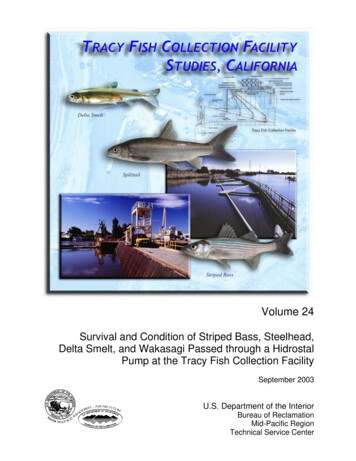
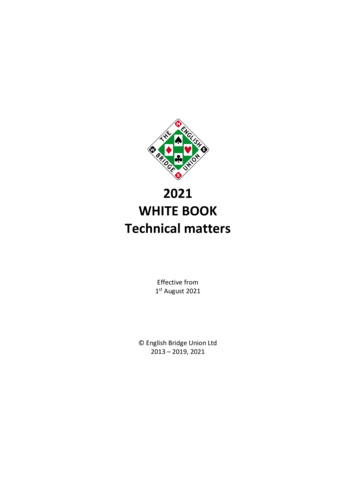
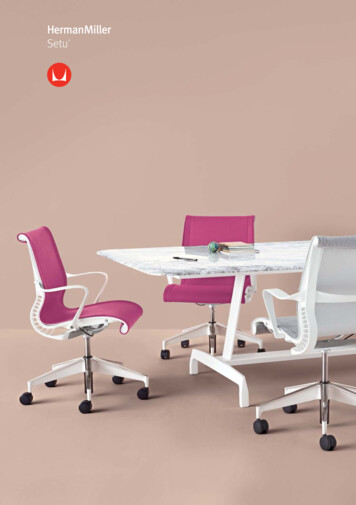
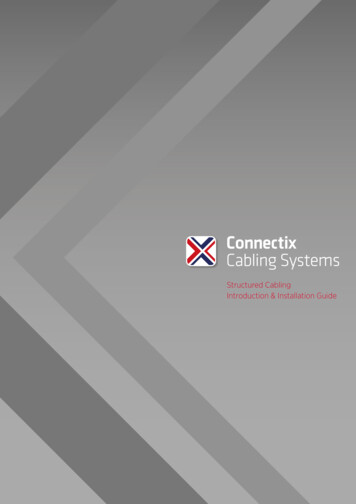
![[CLASS XII CHEMISTRY PRACTICALS]](/img/23/xii-chemistry-practical.jpg)
